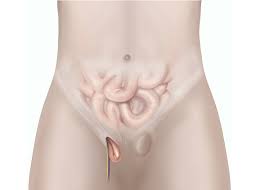Home > Department >Inguinal Hernia Treatment

Inguinal Hernia Treatment
Laparoscopic inguinal hernia treatment, also known as laparoscopic inguinal hernia repair, is a minimally invasive surgical procedure used to repair hernias that occur in the inguinal region (groin area).
Inguinal Hernia Treatment Overview
Inguinal hernia treatment options include both non-surgical and surgical approaches. The choice of treatment depends on the severity of the hernia, symptoms, and individual health considerations.
Non-Surgical or Conservative Management:
Observation:
- Small, asymptomatic hernias may be monitored without immediate intervention. Regular check-ups with a healthcare professional are essential to assess any changes in the hernia.
Lifestyle Modifications:
- Avoiding activities that increase intra-abdominal pressure, such as heavy lifting, may help prevent the hernia from worsening. Maintaining a healthy weight can also reduce strain on the abdominal muscles.
Use of a Supportive Device:
- Wearing a supportive device, such as a hernia truss or belt, may provide temporary relief and help keep the hernia in place. However, these devices are typically not recommended as a long-term solution.
Surgical Intervention:
Hernia Repair Surgery:
- The most common and effective treatment for inguinal hernias is surgical repair. There are two main types of hernia repair surgeries: open hernia repair (herniorrhaphy) and laparoscopic hernia repair.
Open Hernia Repair (Herniorrhaphy):
- In this procedure, a surgeon makes an incision in the groin, pushes the protruding tissue back into place, and reinforces the weakened area with stitches or a mesh material.
Laparoscopic Hernia Repair:
- This minimally invasive procedure involves making several small incisions and using a camera and special instruments to repair the hernia. A mesh may also be used to reinforce the weakened area.
Mesh Repair:
- The use of mesh in hernia repair helps to reduce the risk of recurrence. It provides additional support to the weakened tissue and allows for tension-free repair.
Outpatient Procedure:
- Inguinal hernia repair is often performed as an outpatient procedure, and recovery time is generally relatively short.
Emergency Surgery:
- Strangulated Hernia:
- If an inguinal hernia becomes trapped (incarcerated) and blood flow to the protruding tissue is blocked (strangulated), emergency surgery is necessary to release the trapped tissue and repair the hernia.
Advantages of Laparoscopic Inguinal Hernia Repair:
- Smaller Incisions: Laparoscopy involves smaller incisions, resulting in less postoperative pain and reduced scarring compared to open surgery.
- Faster Recovery: Patients typically experience a quicker recovery and can return to normal activities sooner.
- Reduced Risk of Infection: The smaller incisions and reduced exposure to the external environment lower the risk of surgical site infections.
- Shorter Hospital Stay: Most patients can go home the same day or within a day or two after the procedure.
- Less Blood Loss: The precision of laparoscopic techniques can lead to less blood loss during surgery.
Meet Our Doctors
Our administration and support staff all have exceptional people skills and trained to assist you with all medical enquiries. Doctors will be available from 8 am : 12 am , kindly call to confirm your Appointment.
- Departments
Urology
Gynaecology
Critical Care Medicine
Joint Replacement
Pediatric Clinic
Emergency Cases
Please feel welcome to contact our friendly reception staff with any general or medical enquiry call us.
+91 8208612746
Opening Hours
- Monday – Friday :- 8.00 – 7:00 pm
- Saturday :- 9.00 – 8.00 pm
- Sunday :- 10.00 – 9.00 pm
- Monday – Sunday : 24/7 Available



